Explore The Beautiful Maasai Market In Nairobi That Offers Authentic African Crafts In 2026
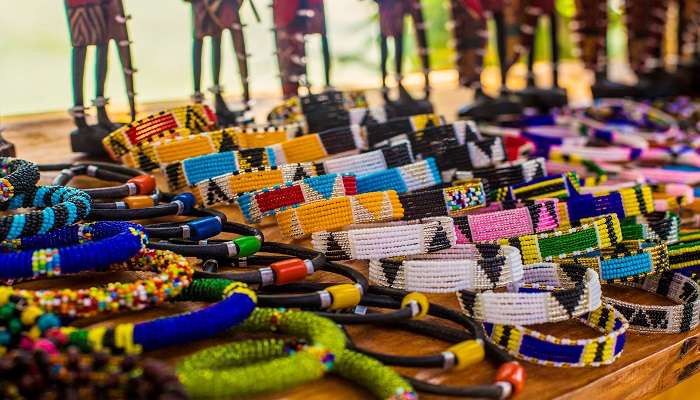
The Maasai Market in Nairobi, located in the capital city of Kenya, has grown to be a well-known name in eastern Africa over time, mainly because of its uniqueness and the artefacts. The market offers almost everything that depicts traditional African antiques and has developed into a meeting place for all people who seek to purchase genuine African-crafted items. This is a conventional Kikuyu trade centre, and you can find excellent gifts and souvenirs to take home while on your safari or the beach in Kenya. It is an outside market where one can shop, and it sells various products such as African pots and pans, artwork, jewellery, shoes, bags, clothes, jewellery and cutlery, among others. The Maasai Market is named after the Maasai people and is one of the most renowned in Kenya.
Where Is The Maasai Market In Nairobi
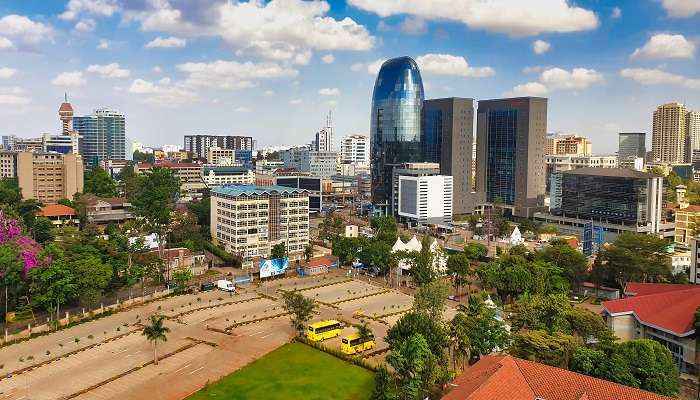
The Market is constantly moving, making its rounds around the city during the week. Among several Maasai Markets frequently visited by many Nairobians, the most famous one is the one in the central business district behind the Hilton Hotel at the High Court parking. It is always open on Saturdays. It opens at around 8 in the morning and closes at 7 in the evening throughout the weekdays, but not on Mondays. If you are unavailable on Saturdays, you can come to the Yaya Centre in Hurlingham on Sundays, at Kijabe Street Park opposite the Norfolk Hotel, and next to the Nairobi River on Tuesdays. Another branch is on Prestige Plaza along Ngong Road and is open on Tuesdays. If you are in the Central Business District on Wednesdays, visit the Capital Centre on Mombasa Road. If you are free on Thursdays, go to Junction Shopping Mall, Village Market in Gigiri and Lavington Mall on Fridays.
Must Read: Things To Do In Nairobi
What To Buy At The Maasai Market In Nairobi
To plan a satisfactory trip to the Maasai Market in Nairobi, you need to keep some tips in mind. Here is a list to help you fully enjoy this vibrant cultural experience.
1. Artwork And Carvings
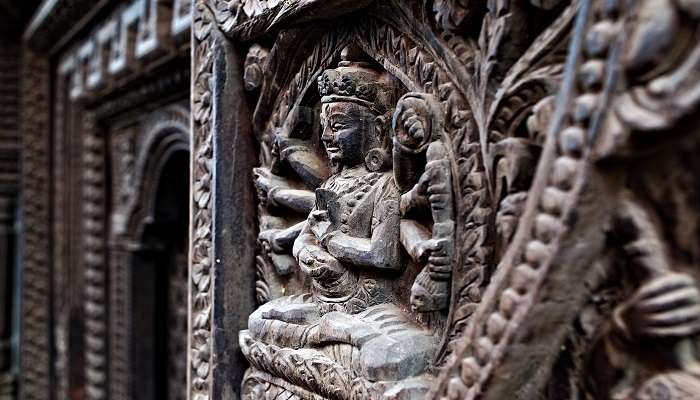
There is always good art in the Maasai market, and most of the arts have an African touch. There are also numerous sweet market stands where you can buy some nice things for rather a low price, but if you want something unique, then it is better to go to one of the galleries in Nairobi. This market also has a fine variety of wooden carved items, bowls, baskets, dolls, and other items that would introduce the flavor of Kenya into your homes.
2. Maasai Blankets

Traditional Masai blankets, referred to as Maasai Shukas or Kikois, are available in a broad range of colours. The shukas, which embody the Maasai culture, are probably one of the most beautiful things you would like to take with you as a memento of your trip to Kenya. They can also be used as a bedspread, a picnic mat, or simply as an additional layer to snuggle in cold weather.
Suggested Read: Beaches In Kenya
3. Jewellery
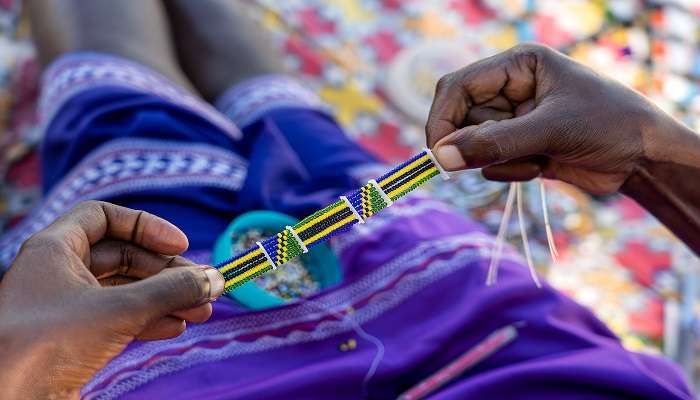
It is well known that the Maasai market offers a wide range of accessories, especially ornaments. These could be of different types, such as earrings, bracelets, and necklaces, and most of them are brightly coloured. There may be some good and exclusive articles for a moderate price in these shops. Some popular jewellery is bangles with beads of Kenya’s national colours.
4. Maasai Sandals
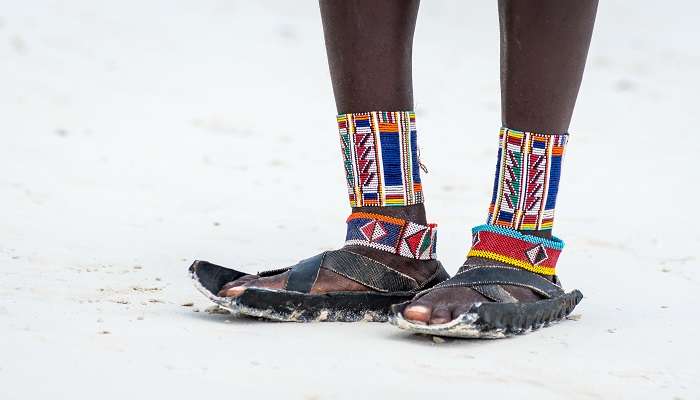
The Maasai market is filled with Maasai leather and beaded slippers. They come in various designs and colours; therefore, take your time before you find the design you like. These sandals are of good quality and very appropriate for a beach trip. They are a must-have.
Suggested Read: National Parks In Kenya
5. Kiondos
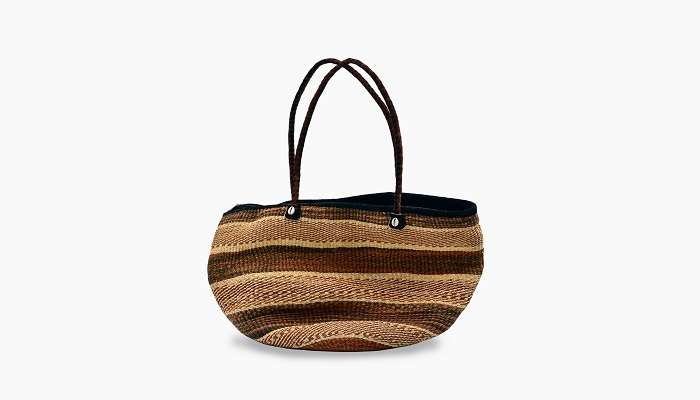
Kiondos are also attractive items that should be bought from the Maasai market. They are handwoven bags that carry items on a daily basis and have the happiest designs and fashioning. These bags can be made from Indigenous vegetable twine with leather embellishments.
Tips For Visiting Maasai Market
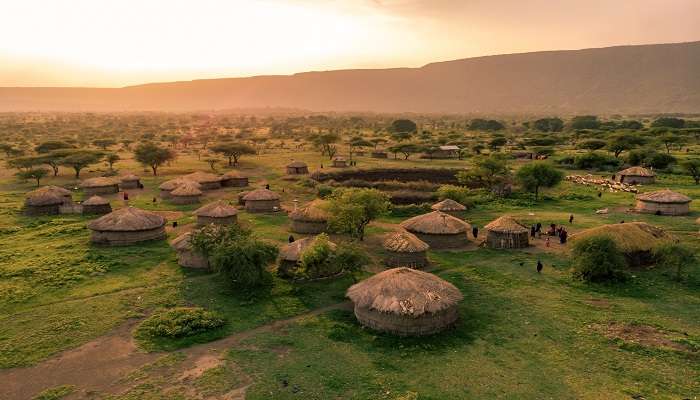
Bargaining And Language: They say bargaining is part of the experience of the Maasai market, and if you are a tourist you are likely going to be charged more than a local, this means you must bargain politely but firmly. However, knowing Swahili’s few words will be vital since it will make you appear as a knowledgeable guy or lady who does not want to be exploited.
Local Currency: It is essential to convert to the local currency while shopping. Besides, it will also be cheaper when one uses Kenyan currency while buying the product since the exchange rate will also affect the amount spent. As for the latter, there are many foreign exchange bureaus in the city centre. However, one may exchange money at the airport or any of the city’s banks.
Explore as many vendors as possible: The Maasai market perhaps has the highest density of vendors, and if you are not very careful, you buy everything from a single vendor. While it is okay to source all your items from one store, you never get to see many choices other vendors might offer.
Further Read: Flea Markets In Nairobi
While planning your trip to Kenya, don’t miss the opportunity to explore its rich culture! Head over to the Maasai Market in Nairobi, where you can support local craftsmen and bring back something unique that truly captures the spirit of the place. It’s a must-see that’ll make your vacation one you’ll never forget!
For our editorial codes of conduct and copyright disclaimer, please click here.
Cover Image Source: Shutterstock
Frequently Asked Questions About Maasai Market In Nairobi
When is the most appropriate time to visit the Maasai Market?
It is advised to get to the market early in the morning, ideally in the morning around 8 or 9 in the morning for more variety in the products sold and less traffic from other customers. Early visits also enable one to discuss more with the artisans and learn more about their arts and crafts.
Is it comfortable to visit Maasai Market?
The Maasai Market is relatively comfortable, however like any other public place that is crowded expect pick-pocketers. Ensure that you don't expose yourself by being cautious, don't carry quantities of cash with you and also ensure that you constantly check on any of your belongings. Going in large groups or accompanied by locals might also help to increase your safety and fun.
Can one bargain at the Maasai Market?
Indeed, haggling is not only permitted but is more or less expected when shopping at the Maasai Market. It is recommendable to begin bargaining from roughly 50% of the initial price that is asked and bargain with the vendors politely. Negotiations are always enjoyable when it comes to dealing with the art form’s producers but ensure to negotiate reasonably for the work that has gone into the making of the product.
What’s Maasai Market?
The Maasai Market is an open-air, lively market that sells items in different parts of Kenya. This market is indeed called the Maasai market. Still, the Maasai people are just a small portion of souvenir makers since it is a market of independent artisans from different tribes in Kenya. The market is special and offers true African artistic ornaments like jewellery, clothing, sculptures and other handmade products.
How can I distinguish the original Maasai beadwork?
Original Maasai art is usually elaborate and they incorporate complex designs with quality beads. Inquire from the vendor about the item and whether it was homemade or produced by professional artisans. Therefore, authentic beadwork is generally similar to the widely made beads in the market.
People Also Read:
Sukawati Art Market Badung Market Maeklong Railway Market
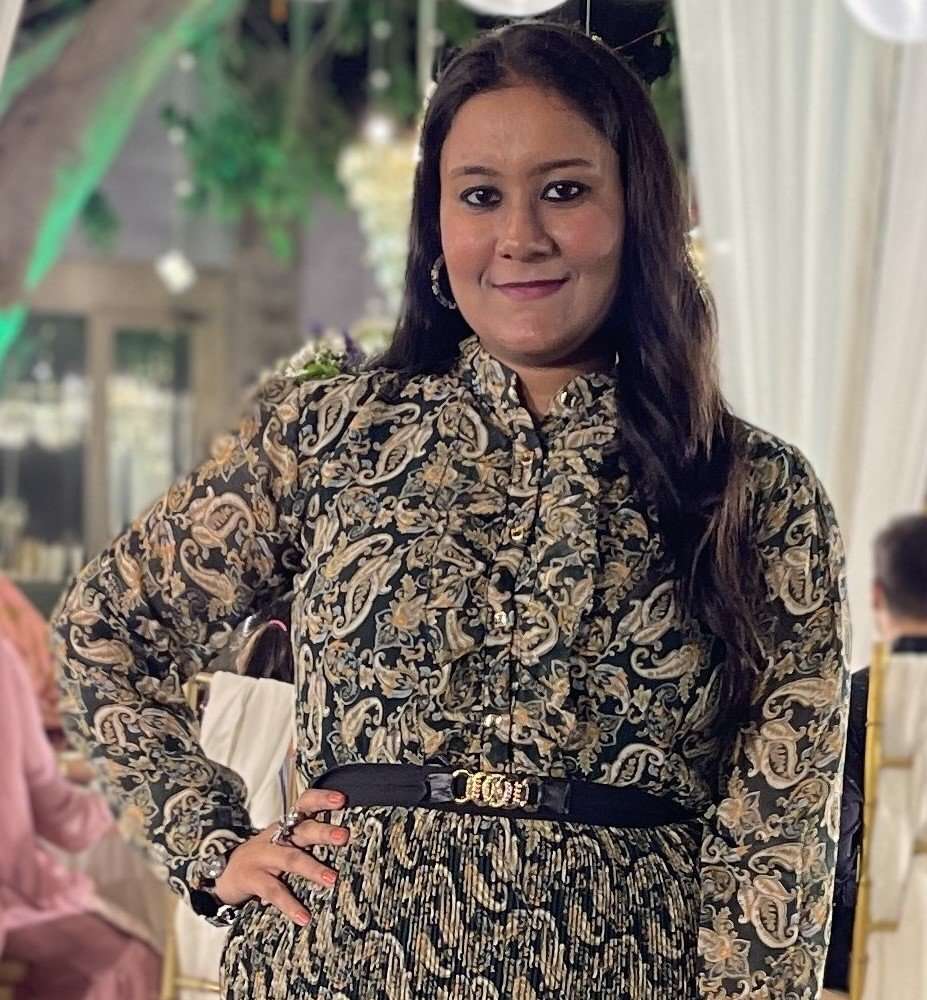
Unveil the hidden treasures of the globe and turn every travel dream into reality. As a Content Writer, I am passionate enough to craft stories from ancient wonders to modern marvels. My words paint the picture-perfect itinerary for unforgettable experiences. Let my words be your trusted guide to immerse in the diverse culture and discover the beauty of the unknown.











